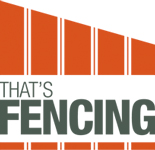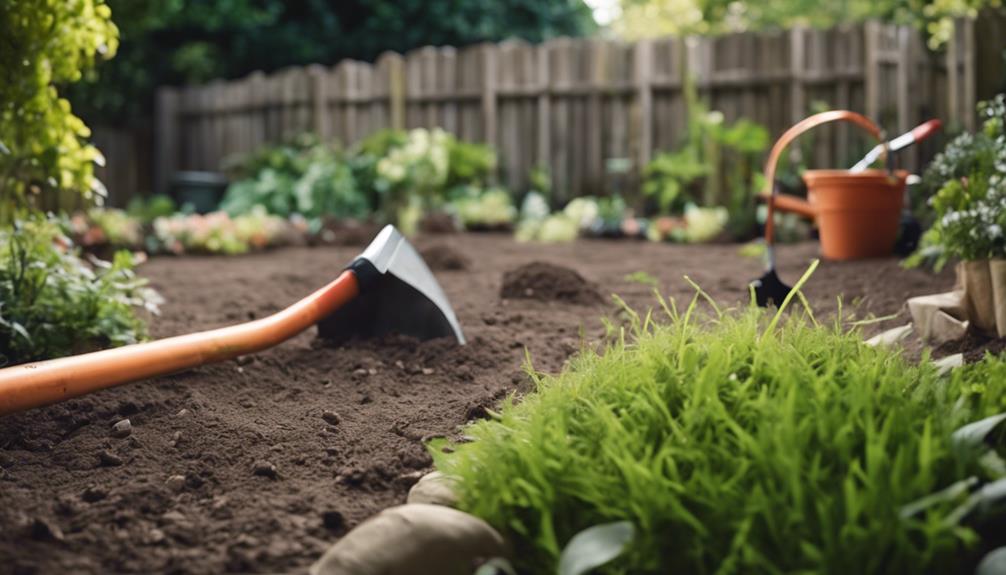What is the best way to prepare my base for a timber fence?
The ideal method to prepare your base for timber fencing involves several steps. Firstly, accurately mark out your barrier path, ensuring it is straight. Before you start any digging, make sure you do not disturb any underground utilities.
Your local terrain, whether it is clay, sand, or loam, has a significant impact on water drainage and the stability of your foundation. Different terrains require different solutions. The depth of the holes for your fence posts should be around one-third of the height of your barrier, but this may vary depending on the type of soil and local climate conditions.
Consider using crushed stone from a local supplier for better water drainage or concrete from a reputable brand for more challenging conditions, while complying with local building regulations. Ensuring the ground is level is crucial for proper water drainage and stability.
Fun fact: Did you know that the world’s longest wooden fence is in Australia and stretches over 5,614 kilometers?
Anyhow, by following these steps, you are laying the groundwork for a sturdy wooden barrier.
Understanding the Importance of Base Preparation
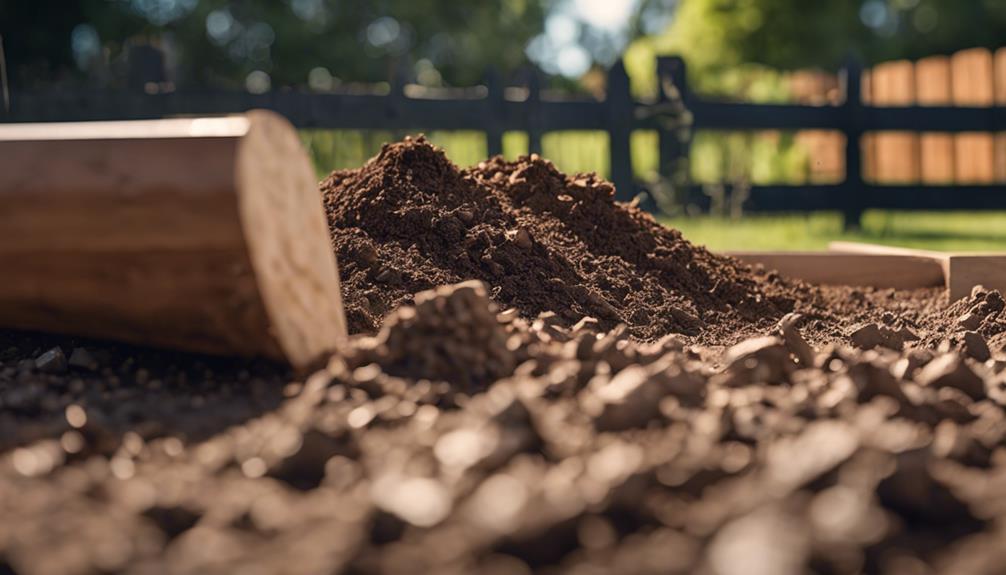
Before laying a single post, it’s essential you understand how base preparation directly impacts your fence’s stability and longevity. Factors such as drainage and ground movement can’t be overlooked, as they play a significant role in maintaining the integrity of your structure over time.
Additionally, being aware of local soil conditions and adhering to regulations will guarantee your timber fence stands strong and compliant.
1. Impact on Fence Stability and Longevity
Ensuring fence stability and longevity depends greatly on the preparation of a solid foundation. The strength and durability of your wooden fence rely on a well-thought-out base. The first crucial step is understanding your soil type. Different soils require specific approaches to ensure sturdy support for the fence posts. Effective water management, including drainage systems, is vital. Without it, water accumulation can weaken the fence’s foundation, increasing stability issues.
Dealing with these factors directly reduces potential long-term consequences that could compromise the structural integrity of your fence. Regular maintenance tasks, such as monitoring soil erosion signs or water pooling near the base, can help identify and address problems promptly. This proactive approach helps prolong the lifespan of your wooden fence.
Therefore, with proper care and attention, your fence can certainly endure the passage of time.
2. Drainage and Ground Movement
Good drainage and ground movement management are crucial for constructing a robust timber fence. This involves creating a base that allows water to drain away from the fence, thus preventing the build-up of moisture around the posts—a common cause of decay. Utilising equipment like land grading equipment can aid in establishing this base.
Soil stability is another key consideration, helping to counter the impacts of seasonal changes on your fence. For instance, local companies can assist in ensuring your ground is ready to withstand fluctuations from hot weather or heavy rainfall.
An interesting point to note is that a well-prepared base can significantly prolong the lifespan of your timber fence, making it a worthwhile investment. Therefore, effective water management, stable soil, and thorough ground preparation are essential for creating a sturdy and long-lasting fence.
3. Local Soil Conditions and Regulations
Local soil conditions, including substrates like clay or sand, play a crucial role in determining the optimal base for your wooden barrier. Each soil type affects drainage uniquely, necessitating tailored base preparation methods to ensure your fence’s longevity and stability. For instance, clay-laden soils may need extra water runoff solutions to ward off waterlogging, while sandy soils could benefit from compaction for improved firmness.
Furthermore, compliance with local regulations isn’t a matter of choice. Rules around foundation permits or drainage often shape the construction approach. Certain regions impose stringent norms regarding foundation depth or water runoff management. Get in touch with your local council or governing body to confirm your wooden barrier’s durability and legal compliance.
Remember to consider local suppliers for your fencing needs. They can provide valuable advice about materials and tools suitable for your area’s soil conditions.
Here’s a random fact: Did you know that different soil types can affect the colour of your fence? Clay soils can cause a reddish tint, while sandy soils might leave a lighter, beige hue.
Essential Steps for Base Preparation
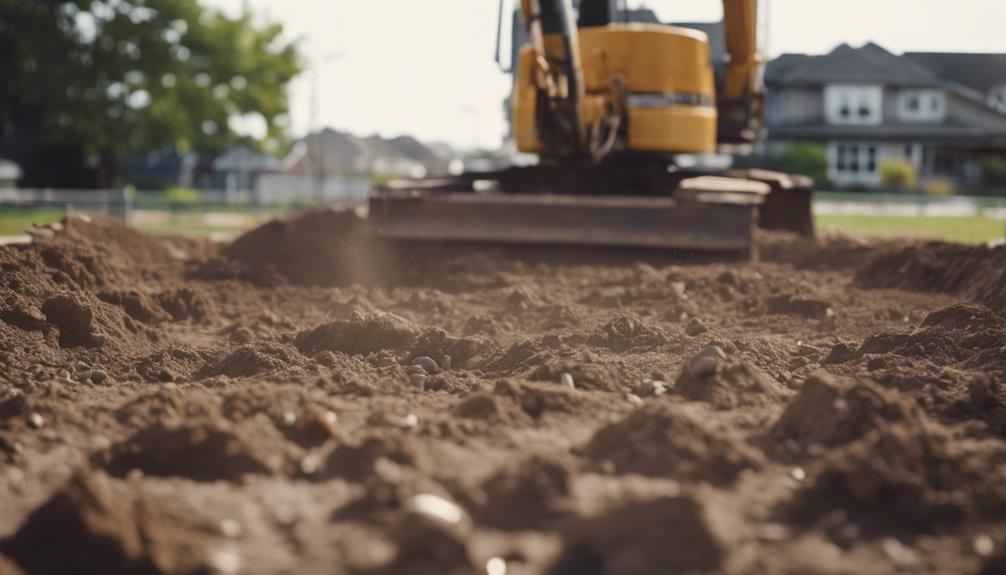
To start your project, you’ll first need to accurately mark the fence line; this ensures your timber fence is straight and aligned.
Don’t forget to contact your utility locating service before digging; it’s essential to avoid any underground lines.
Step 1: Mark the Boundary Line
First, identify your fence line. This crucial step involves marking the spot for your wooden barrier with stakes, string lines, and marker spray. Begin by analysing the soil conditions. This information will dictate your ground preparation strategy.
Remember, your property boundaries must be clear to avoid trespassing onto your neighbour’s territory. An interesting fact is that boundary disputes often lead to legal issues, making this an essential step.
The straightness and alignment of your fence depends on the precision of your string lines. Place stakes methodically at every corner and along the purposed fence route to envision the project’s extent. The foundation for a successful installation lies in accurate measurements and thoughtful planning in this initial phase.
Step 2: Ring Your Utility Locating Service
To ensure safety, your first step should be to contact a utility locating service. This crucial step, more than just a suggestion, is a fundamental precaution against the unseen dangers beneath the surface. Not only does it maintain safety, but it also ensures the preservation of the very foundation you’re working on.
Digging without first getting in touch with a utility locating service could lead to disastrous clashes with underground conduits. This isn’t just about protecting the utilities, but also about creating a secure and accident-free environment. So, before you even consider breaking the ground, contact your local utility locating service.
These services, specifically designed to pinpoint the exact locations of your utility lines, allow you to plan your project with those areas in mind. Don’t take risks with safety; making that call is a simple yet effective way to avoid unnecessary dangers. Remember, London was constructed on a network of tunnels and catacombs – one misstep could result in an unwelcome surprise!
Step 3: Dig Out Post Holes
Excavating post holes, a crucial step in ensuring a strong foundation for your timber fence. The composition of the soil in your garden, whether it is clay, sand, or loam, plays a significant role in determining the depth and width of the holes for optimal stability.
For a robust barrier, the depth of your hole should be around a third of your fence’s height. For example, a 2-metre fence, a common height for residential use, requires holes that are at least 60-cm deep. Additionally, take into account the thickness of the poles; larger poles like the 4x4s may need more substantial holes for proper support. Other factors to consider for stability include local weather conditions and soil type. We discussed the perfect height for timber fence here.
Precise digging ensures that your fence can withstand harsh weather and remain durable for many years.
Step 4: Levelling the Base
Levelling the ground around your post holes is a crucial step in fence installation. It ensures proper drainage and maintains fence alignment. Begin by compacting the soil at the bottom of each hole, creating a firm foundation to prevent future settling.
Tools such as the spirit level or laser level are perfect for checking the evenness of the foundation. This is not just for looks. It helps prevent water build-up and ensures stability. Uneven foundations can lead to water pooling, which may weaken your fence’s structure.
A well-aligned and compacted base provides solid support for the fence posts, helping to withstand the elements. Spending time on properly levelling your base can significantly extend the lifespan and improve the visual appeal of your fence.
Selecting the Correct Base Material
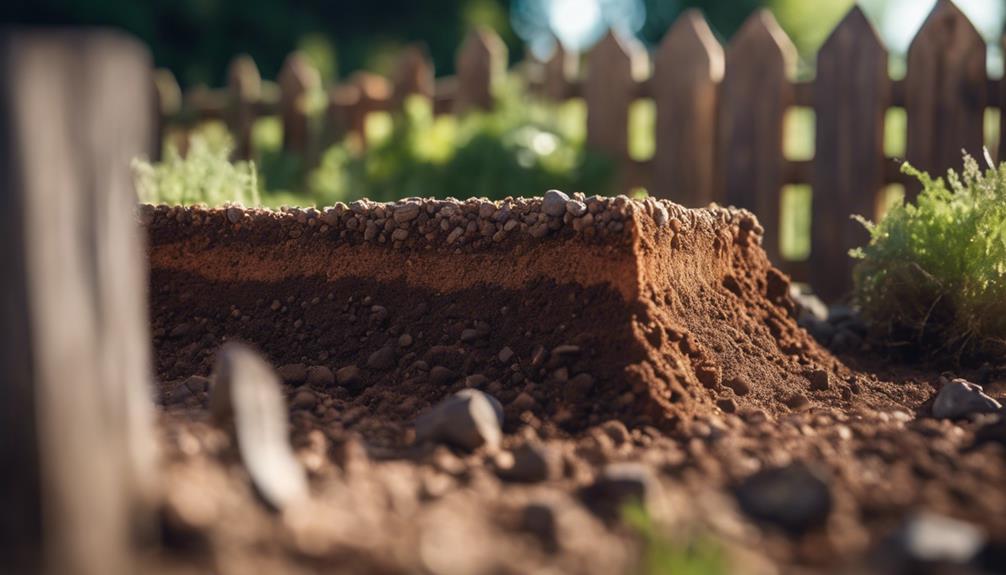
Choosing the correct base material is essential for the durability and stability of your timber fence. Crushed gravel is excellent for drainage and creating a solid foundation.
Concrete is extremely durable, especially in regions with severe weather conditions.
It is important to always take into account your local regulations and the type of soil in order to ensure you are selecting the most suitable option for your particular circumstances.
1. Crushed Gravel
Crushed gravel, a splendid option for a timber fence base, greatly enhances drainage and can adapt to various soil types. Opting for this material ensures efficient water drainage, protecting your fence’s foundation from potential damage caused by water build-up. Selecting the right size of crushed stones, a type of gravel, is crucial. If the pieces are too small, they could compact too tightly, hindering water flow. On the other hand, if they’re too large, they might not provide a stable enough base.
Achieving the correct balance is essential, especially to meet your soil’s specific requirements. Proper use of compaction methods can strengthen the foundation, making it resilient against water flow and soil movements. This stage is crucial for establishing a robust, long-lasting base for your timber fence, ensuring it harmonises seamlessly with the natural surroundings.
2. Concrete (Optional)
For advanced construction tasks, choosing concrete as your foundation material can provide unparalleled stability, especially in areas where ground conditions are subpar. Properly mixing cement is essential. Strictly following recommended ratios guarantees that your fence posts gain the necessary strength to withstand external forces. Exercising patience during the curing process is crucial for maximising pillar strength and ensuring long-lasting durability.
Seeking advice from construction experts can have a significant impact. They can offer detailed insights on working with cement, especially in maintaining ground stability.
Local Regulations and Soil Considerations
Understanding local regulations and evaluating your yard’s soil type are essential steps in selecting the right foundation material for your timber barrier.
First, carry out a soil examination. This will determine the composition and water management capabilities of your ground, a crucial factor that might require additional water drainage solutions or specific foundational materials.
Keep in mind that building permits for barrier installation may be necessary in your area. Regulations can vary significantly, highlighting the importance of seeking professional advice.
If you are dealing with unique ground conditions or are unsure about local codes, seek guidance from experts. They can offer valuable recommendations on selecting appropriate foundation materials that comply with regulations and suit your ground type. This will ensure the durability and stability of your timber barrier.
Were you aware that the type of soil can impact the lifespan of a timber fence? For example, clay soil can pose challenges due to its water retention properties.
Additional Tips and Considerations
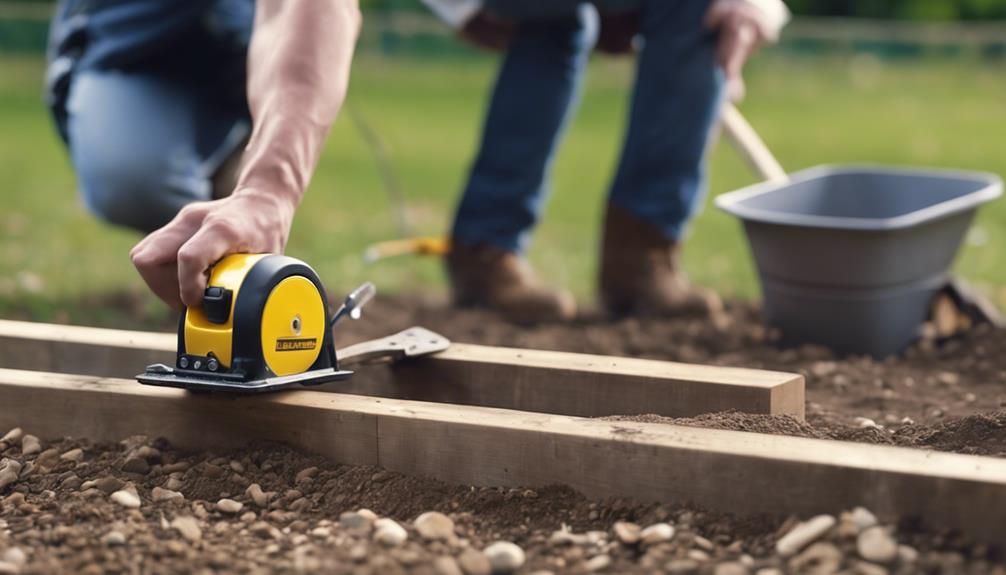
Exploring further, the use of post hole sleeves is a helpful technique for improving resistance to rot and simplifying the removal of posts in the future. These sleeves protect your fence posts from moisture and insects, significantly extending their lifespan. This method not only saves you from future problems but also maintains the structural integrity of your fence.
Choosing the right backfill for your post holes is crucial. For example, using gravel backfill aids drainage around the posts, preventing water buildup and subsequent decay. This approach ensures the stability and durability of your posts.
When dealing with sloping terrain, it is important to be cautious. Adapting the depth and positioning of your fence posts to suit the slope is essential for ensuring the stability and visual appeal of your fence. In such situations, it may be worth considering hiring professionals like us. Our experienced team can expertly handle these complexities, creating a fence that is both functional and visually pleasing.
Fun fact: Were you aware that the Great Wall of China utilised rice flour in the mortar, making it one of the strongest and most long-lasting fences globally? This serves as a testament to the significance of materials and construction methods in the longevity and strength of fences.
Conclusion
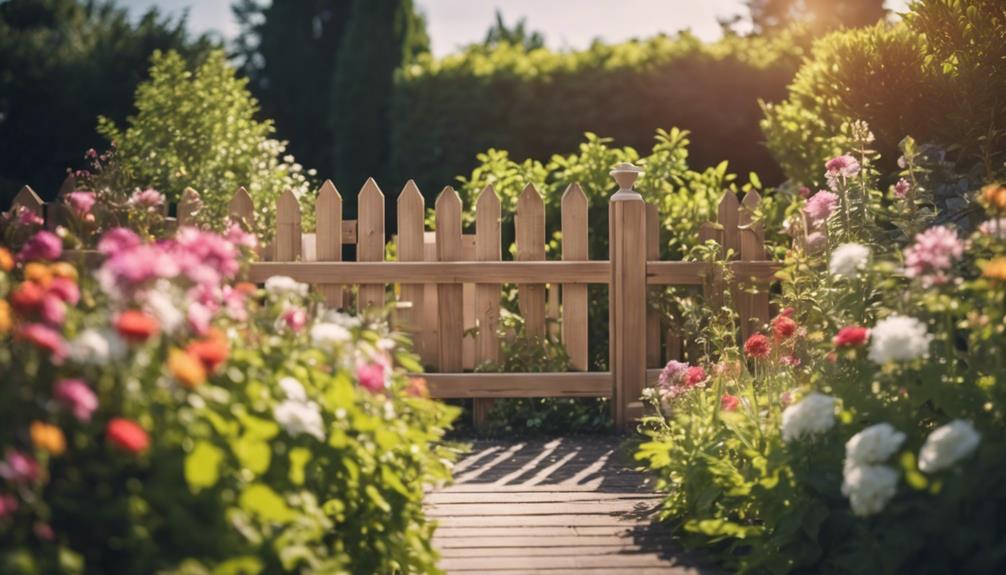
Constructing a sturdy timber fence relies on a strong foundation. In the world of fence building, each stage holds significance. Recognising this, it’s not just a matter of completing tasks, but understanding the importance of each one. Ensuring proper drainage enables your fence to withstand different seasons. Adhering to soil regulations helps you avoid legal issues in the future.
Investing in high-quality materials timber posts may appear expensive at first, but it is a worthwhile investment in the durability and appearance of your fence. Think of it like purchasing a Rolex – an initial expense that pays off in terms of longevity and style.
The foundation of your fence is as crucial as the fence itself. Cutting corners during this vital stage can result in premature deterioration and costly repairs. Whether you are an experienced DIYer or considering hiring professionals from local companies like That’s Fencing, prioritising expert advice is key. The aim is not just to complete the task, but to achieve a visually appealing and structurally sound outcome.
And here’s the last interesting fact: the world’s longest fence is the ‘Dingo Fence’ in Australia, which spans over 5,600 kilometres. Quite an inspiration for fence builders, isn’t it?
